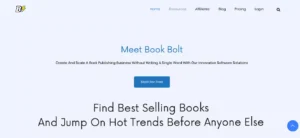
In the fiercely competitive Amazon FBA market with over 2.5 million sellers, mastering wholesale sourcing can drive your business's success.
The global wholesale market was worth $48.9 billion in 2023 and is projected to grow 5.9% annually until 2027. Wholesale sourcing allows you to acquire products at low costs, boosting profit margins from 14-28%.
This article reveals strategies to excel at wholesale sourcing for Amazon FBA. It guides you through finding top wholesalers, negotiating profitable deals, streamlining operations, and reducing costs.
Utilizing data-driven strategies from industry leaders, this comprehensive guide equips both new and experienced sellers with tools and tactics to thrive in the Amazon FBA landscape.
What Is A Wholesale Model?
In the wholesale model, a seller acquires products in bulk directly from the manufacturer at a discounted, wholesale price. The seller then sells these products on Amazon, aiming to make a profit from the retail markup.
Wholesale model contrasts with retail arbitrage, where sellers purchase inventory from retail outlets to resell online.
One of the primary characteristics of wholesale sourcing is the emphasis on volume purchasing. Sellers often buy large quantities of inventory, which enables them to negotiate better prices, thereby increasing their potential profit margins.
Additionally, since the products are sourced directly from the manufacturer or a licensed distributor, sellers can often bypass several layers of the supply chain, leading to a more streamlined and efficient procurement process.
Pros & Cons Of Amazon Wholesale Sourcing
One of the biggest benefits of offering wholesale pricing is that it can save a lot of money with no sacrifice to your bottom line. While wholesale pricing offers some great benefits, there are also some potential downsides to consider.
Pros
Cons
Selling wholesale is an attractive option for Shopify store owners who want to increase sales, expand their customer reach, and build brand loyalty.
Advantages For Wholesale Sellers
Wholesale sourcing presents numerous benefits for Amazon sellers, including:
- Established Demand: By selling products from known brands, sellers tap into an existing customer base, thereby reducing the time and effort required to build product recognition and trust.
- Scalability: The wholesale model offers scalability, allowing sellers to grow their business by adding more products or increasing the volume of existing inventory.
- Efficient Replenishment: Inventory replenishment is quicker and more straightforward, ensuring that stock levels can be maintained without significant delays. This leads to fewer instances of stockouts and lost sales.
- Lower Time Investment: Compared to retail arbitrage, the wholesale model requires less time sourcing inventory, as purchases are made in larger quantities and less frequently.
- Brand Approval: Wholesale sourcing may facilitate easier brand approval on Amazon, as sellers are dealing directly with manufacturers or authorized distributors.
- Lower Risk: Selling established brands can offer a lower risk profile compared to launching new products or brands, which may require extensive marketing and customer acquisition strategies.
By understanding these benefits and how to maximize them, sellers can optimize their approach to wholesale sourcing for Amazon. Those interested in enhancing their selling strategies may benefit from amazon seller podcasts & interactions to further their expertise.
Disadvantages For Wholesale Sellers
While offering wholesale pricing can provide significant benefits for growing your business, it's important to carefully consider the potential drawbacks as well.
Some key disadvantages and limitations of implementing a wholesale pricing strategy include:
- Reduced profit margins. You'll need to sell higher volumes to make up for the discounted pricing.
- Minimum order requirements. Wholesalers often require minimum order quantities, tying up cash flow.
- Managing B2B relationships. Working with businesses requires different processes than B2C sales.
- Inventory management challenges. Bulk orders can strain inventory if not properly forecasted.
- Potential channel conflicts. Selling wholesale and retail can cause pricing conflicts.
How To Establish Supplier Relationships?
For Amazon sellers, the key to a successful wholesale sourcing strategy lies in establishing robust relationships with suppliers. These partnerships are the foundation of a thriving eCommerce business, especially when leveraging the vast customer base of Amazon's marketplace.
1. Finding Wholesale Suppliers
The search for reliable wholesale suppliers can be approached through various avenues. Industry trade shows and conventions are fertile ground for Amazon sellers to meet and forge connections with potential suppliers.
These networking events offer the benefit of face-to-face interaction, allowing for a personal touch in initiating business relationships. Online wholesale marketplaces also serve as a convenient resource for discovering suppliers and diversifying product offerings.
To streamline the search, sellers can leverage tools specifically designed to aid in this process, such as the amazon seller tools. These tools helps to identify reputable wholesale suppliers that match the seller's business needs.
When reaching out to potential suppliers, professionalism is paramount:
- Sellers should be prepared with their business information
- Clearly articulate the products they are interested in
- Pose relevant questions
- Gauge the supplier's compatibility with their business model
Additionally, it's essential to conduct comprehensive amazon competitor analysis to understand what products are performing well and the suppliers behind them.
2. Dealing With Overseas Suppliers
Sourcing products from international markets can be a lucrative strategy for Amazon sellers, but it comes with its own set of challenges, such as long lead times, communication barriers, quality control, payment risks, and supply chain complications.
Here are strategies to manage these challenges:
Build Strong Relationships: Establishing trust with suppliers is pivotal. Frequent communication and visits can help strengthen the relationship.
Use Sourcing Tools: Platforms like Alibaba or Jungle Scout can assist in finding and vetting reliable suppliers.
Quality Checks: Conduct thorough inspections and quality control checks before shipment to avoid costly returns.
Negotiate Payment Terms: Secure favorable payment terms that protect both parties from financial risk.
Logistics and Inventory Management: Partner with experienced sourcing agents or third-party logistics providers to streamline the shipping process and manage inventory effectively.
Clear Communication and Expectations: Ensure there are no misunderstandings by setting clear expectations and establishing robust communication channels.
Legal and Regulatory Compliance: Stay informed about the legal and cultural nuances of the supplier's country to avoid compliance issues.
3. Building Supplier Trust
Building trust with suppliers is crucial for securing preferential treatment such as exclusive deals, better pricing, and early access to new products. This trust is earned through consistent, honest communication and by fulfilling agreements such as timely payments and adhering to order commitments.
Understanding the terms of engagement with each supplier, including shipping costs, minimum order quantities, and return policies, is critical. This knowledge not only aids in making informed decisions but also demonstrates to suppliers that the seller is serious and knowledgeable about their business.
Additionally, utilizing platforms like Amazon's B2B Seller Central and Amazon Business can facilitate a more efficient wholesale sourcing process, providing sellers with tools to manage orders and access features tailored to business customers.
Inventory Management Strategies In Wholesale

Effective inventory management is a cornerstone of success for Amazon FBA sellers, especially when incorporating wholesale sourcing into their business model.
Keeping a close eye on stock levels and ensuring products are readily available for customers are essential practices that can significantly impact a seller's performance and profitability.
1. Amazon FBA And Inventory Control
Amazon's Fulfillment by Amazon (FBA) program provides sellers with the ability to leverage the e-commerce giant's vast logistics network. SmartScout outlines that well-executed inventory control allows sellers to capitalize on Amazon's fulfillment capabilities, such as Amazon Prime eligibility and fast shipping options, enhancing customer satisfaction and increasing sales potential.
A crucial aspect of Amazon FBA inventory control is understanding Amazon's Inventory Performance Index (IPI), which measures how effectively a seller manages inventory.
Eg: A high IPI score can lead to better search rankings and more favorable storage terms, while a low score may result in penalties or restrictions.
2. Balancing Stock Levels
Striking the perfect balance in inventory levels is challenging yet vital. Sellers must manage a fine line between having sufficient inventory to meet customer demand and avoiding excess stock that ties up capital and incurs high storage fees. Effective demand forecasting and understanding sales trends are key to determining the right reorder points and quantities.
To assist with balancing stock levels, sellers can utilize Amazon FBA calculator tools to analyze the costs associated with different inventory scenarios and inform their decision-making process.
3. Addressing Amazon's Operational Complexities
Amazon's ecosystem is complex, and understanding it is critical for wholesale success. Here are some areas where sellers often face challenges:
Packaging and Prep Requirements: Amazon has stringent guidelines for packaging products sent to their fulfillment centers. Non-compliance can lead to additional costs. Consider using Amazon’s FBA Prep Service to ensure products meet Amazon’s standards.
Inventory Performance Index (IPI): Failing to maintain prescribed inventory levels can result in penalties or loss of Prime status. Use tools to predict and maintain an optimal IPI score.
Fees and Costs: Amazon’s fees, including referral fees and storage costs, can eat into profits. Use an Amazon FBA calculator to understand and manage these expenses.
Paid Advertising: To stay competitive, investing in advertising is often necessary. Develop a marketing strategy that maximizes return on investment while keeping costs in check.
By implementing these strategies, sellers can mitigate the risks associated with wholesale sourcing for Amazon and pave the way for a more streamlined and profitable operation.
Tips To Excel The Amazon Wholesale!
- Product Research and Selection: Leverage your expertise to identify profitable products with growth potential. Utilize tools like Jungle Scout, Helium 10, or Bookbolt to analyze metrics like margins, sales ranks, and competition levels.
- Building Supplier Relationships: Identify reputable wholesalers or distributors with a wide range of brands in your product category. Platforms like Salehoo, Wholesale Central, and Inventory Source can help you find verified suppliers. Negotiate favorable pricing by leveraging your order volume.
- Inventory Forecasting and Management: Utilize data-driven forecasting tools like Forecastly or RestockPro to accurately predict demand and plan inventory levels. Maintain sufficient buffer stock based on sales velocity and supplier lead times.
- Competitive Pricing Strategies: Set competitive prices that provide healthy profit margins after accounting for all costs. Monitor competitor pricing and the Buy Box landscape. Leverage repricer tools like RepricerExpress or BQool to dynamically adjust prices.
- Leveraging Amazon's Fulfillment Services: Take advantage of Fulfillment by Amazon (FBA) to leverage Amazon's logistics network, Prime shipping, and customer service. For slow-moving or oversized products, Fulfillment by Merchant (FBM) may be more cost-effective.
- Diversification and Scalability: Reinvest profits to grow your product catalog and increase sales volume. Diversify your product lines and brands to mitigate risk and capitalize on emerging opportunities.
- Automation and Efficiency Tools: As your operation grows, automate processes and leverage tools like InventoryLab, Sellbrite, or Feedvisor for increased efficiency.
Master Wholesale Sourcing For Amazon
With the global e-commerce market projected to reach a staggering $5.8 trillion by 2025, the opportunities for growth are vast – but only for those who can navigate the intricate maze of wholesale sourcing with skill and strategy.
From identifying profitable products with high-demand potential to forging strong supplier relationships that yield unbeatable deals, we'll cover every aspect of this game-changing business model.
Arm you with the tools and tactics to outmaneuver your competitors and claim your share of the lucrative Amazon marketplace.
Get ready to embark on a journey that will transform your Amazon FBA business into a well-oiled machine, propelling you towards sustained growth and long-term success. The path to wholesale sourcing excellence starts here.







